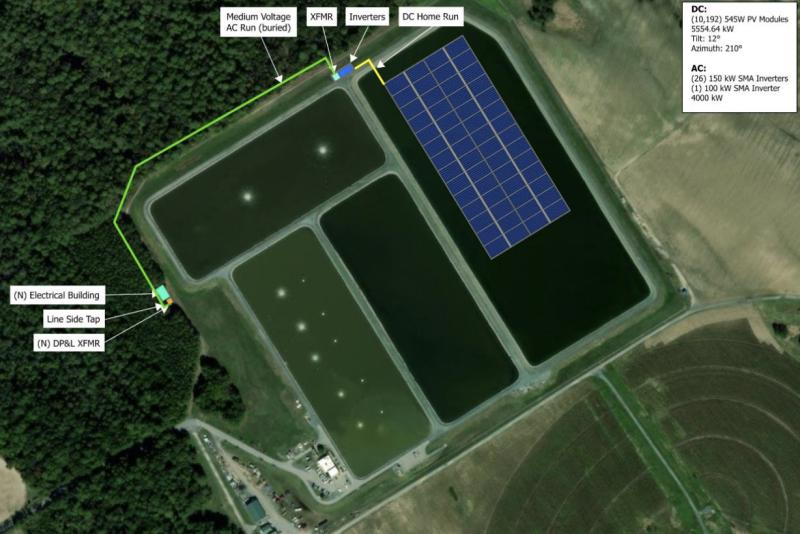Sussex County going green at treatment plant
Sussex County is going green at the Wolfe Neck Regional Wastewater Treatment Facility near Lewes.
On the recommendation of retired county engineer Hans Medlarz, at its Feb. 27 meeting, Sussex County unanimously approved a bid from Noria Energy-Chaberton Energy for a floating solar array to be placed on 11 acres in Lagoon 4 to operate some of the plant’s equipment. The final lease agreement will be voted on by council at a future meeting.
Although Medlarz is officially retired, he is still involved with projects initiated during his tenure.
The project is part of an upgrade to increase capacity at the facility. Medlarz said the floating solar array will be the first in the region.
Medlarz said any treatment expansion can only occur in the location of the primary treatment Lagoon 4, requiring removal of all accumulated biosolids. Before that occurs, all incoming flows must be transferred to Lagoons 2 and 3.
“For the support of the biosolids removal and dewatering equipment, a new electrical service and power distribution center is needed,” he said. He said the existing electrical infrastructure does not support the power needed at the facility and the biosolids removal system.
“A solar power contribution can reduce or possibly eliminate any required electric utility upgrades,” he said, adding that the solar system can be integrated into the facility’s upgraded electrical switchgear design at the facility’s new electrical building.
One of the key reasons Medlarz recommended the company is it can get the project completed in 12 to 16 months.
The proposed lease agreement is $2.3 million over 20 years. However, under terms of the agreement, the county can eventually take over the system.
Benefits of the floating solar array include: reduced algae growth; reduction or elimination of electrical distribution line upgrades; integration into the new electrical building; a green project to address citizens’ concerns; and establishment of a sinking fund for removal of the system after 20 years, which is the lifetime of most solar arrays.
A decommissioning plan will be established to match the county’s solar farm ordinance requirements.
Sussex, BPW study
The project stems from a facility upgrade study funded by Sussex County and Lewes Board of Public Works.
Medlarz said council has already approved a study for the joint use of the facility with the BPW and a study for a possible ocean outfall.
BPW is still mulling over options for the future of the Lewes treatment facility. One of the options is to pump Lewes effluent to the Wolfe Neck plant.
Medlarz said regardless of which path is taken, all biosolids from Lagoon 1 must be removed. The floating solar array will help power the removal process. The Wolfe Neck facility is located along the border of Cape Henlopen State Park off Wolfe Neck Road between Lewes and Rehoboth Beach.
Major project is planned
Other work is planned at the facility in the near future. The Wolfe Neck plant will undergo a major transformation when the 367 acres of pivot irrigation on farmland is converted to an irrigation grid to be sprayed on the ground of a reforested woodlands.
The land will be returned to a natural state and will provide public access via an extension of the Junction & Breakwater Trail to parts of Cape Henlopen State Park that have been closed for two decades. Council approved a land swap of its 376 acres with the state so the entire trail will be on state property.
The land will continue to be used for spraying treated wastewater, but instead of discharging onto crops, as has been done the past 20 years, the filtered effluent will irrigate hundreds of acres of trees and vegetation, to be planted with assistance from the Delaware Center for the Inland Bays.






















































